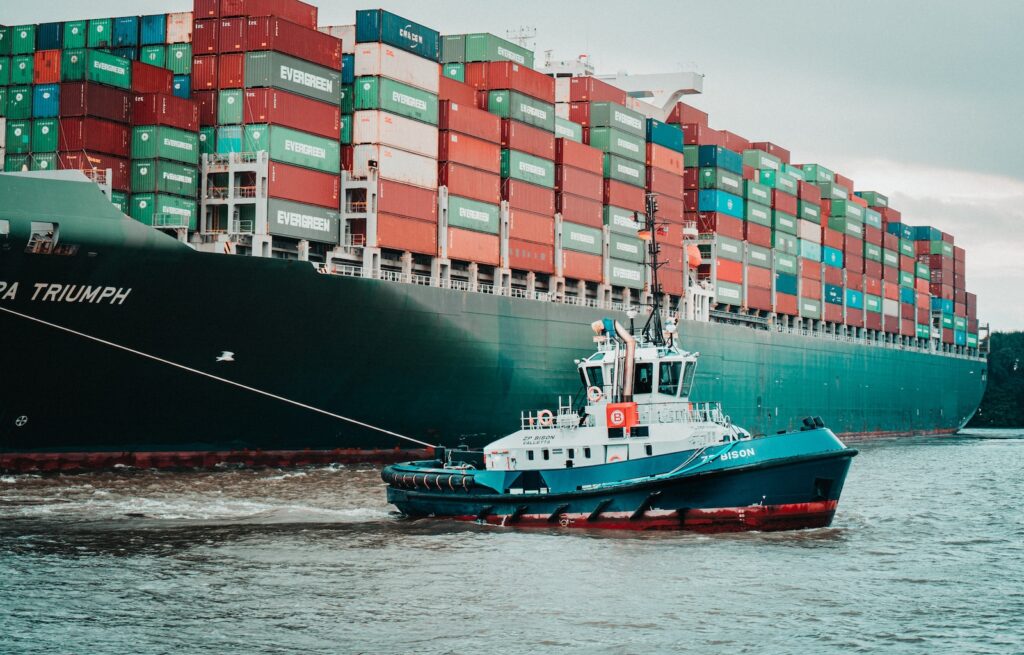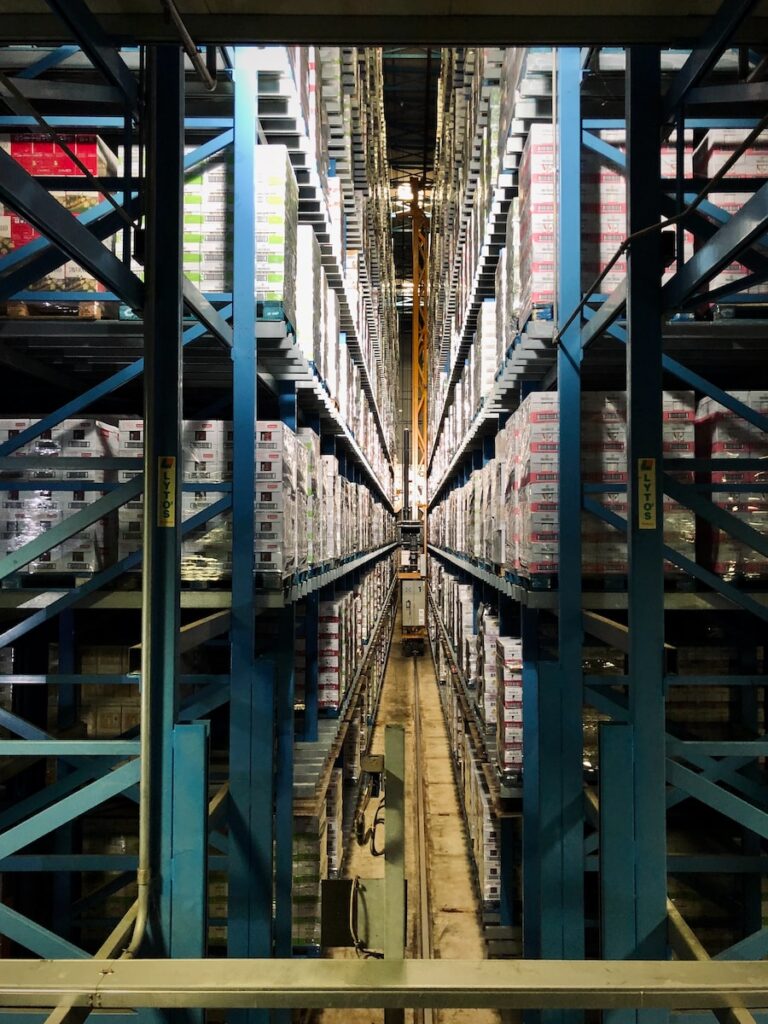Full scope: A guide to cutting your supply chain emissions
Organisations are facing increasing pressure to measure carbon and other environmental footprints more effectively, including scope 2 and 3. Environment Journal consults experts about auditing the impact of suppliers and off-site activities: an essential step in the journey to net zero.
2023 is likely to be remembered as another pivotal year in environmental terms. And not just due to the record temperatures predicted for the Northern Hemisphere’s summer, and expectations the 1.5C global warming barrier will be temporarily exceeded in the 12 months to December.
Early June, the European Union (EU) passed its new Corporate Sustainability Due Diligence Directive (CSDDD). Targeting large organisations within the trading bloc and European Economic Area, the regulations essentially introduce mandatory audits for the entire ‘chain of activities’ to ensure that everything from environmental to human rights standards are being met at every stage of operations.
This means limiting or removing Scope 3 emissions, the polluting greenhouse gases produced within supply and value chains, is about to become a much more pressing matter. Just as Scope 1 – emissions produced internally– and Scope 2, those generated through energy use, already are. And the impact of this will not be limited to the EU itself. Any organisation with a turnover from European trade of €150 million or more will need to comply. Meanwhile, as European decision makers look to clean up supply chains to meet new legislation, pressure is bound to mount on suppliers and customers anywhere in the world.
For many non-EU organisations, taking action means getting the jump on similar regulations being introduced in their home region. The US Securities and Exchange Commission, for example, has already ignited fierce debate with a proposed Scope 3 reporting mandate. And, although the UK’s Streamlined Energy and Carbon Reporting legislation does not cover this yet, it seems inevitable this will happen in the near future. Not least given the so-called ‘shadow’ of supply chain emissions is often significantly larger than the more easily understood ‘footprint’ from internal activities.
‘The majority of emissions typically come from the supply chain, so while this is an area that presents the highest emissions risk for businesses it’s also an opportunity to make tremendous progress. However, this will not be a straightforward process and approaches will vary greatly from industry to industry,’ says Rob Doepel, Managing Partner, Sustainability, UK & Ireland, at professional services giant Ernst & Young (EY), and a member of the UK and Ireland Performance Markets and Investment Committee.
‘New regulation is going to make it even more complex. We’re going to see a significant amount of investment into building data systems, aligning on what the indicators should look like, and establishing processes to collect information from suppliers,’ he continues. ‘[But] I wouldn’t advise any company to wait for legislation or regulation to come into effect before acting. This approach removes the chance to claim a first-mover advantage, and also leads companies to only think about net zero as a compliance or risk matter, while ignoring the opportunities.’
Formed in 2022, the UK’s Transition Plan Taskforce has now published draft guidance for organisations to produce their own gold standard decarbonisation plans, providing a comprehensive overview of all measures that need to be taken. EY’s own analysis shows how off-course major corporations currently are – only 5% of FTSE 100 companies have published roadmaps that would be deemed credible under this framework.
A separate investigation by the British Standards Institute, conducted last year, found that 80% of SMEs consider setting and delivering net zero targets to be vital, a three-fold increase on 2020. But just 17% have taken steps towards sustainability, and only 20% measure and report emissions. In the public sector, the awareness-action gap is equally evident. Research by E.On and Local Government Chronicle suggests over 50% of UK councils are not confident about climate targets, and in January 2022 Climate Emergency UK revealed one-in-five authorities had no action plan whatsoever in place.
To get an idea of how complex Scope 3 emissions can be, we spoke to Svante Göthe, Head of Sustainability at RELEX in Gothenburg, a market-leading supply chain and retail planning platform. Powered by AI, the firm produces precise demand forecasts directing anything from how much of a product should be ordered, and when, to minimum staffing levels. In spring, the company proudly published a report into its efforts to minimise food waste among customers. In 2022, 11m kilograms of waste was avoided through smart buying. That’s enough to feed the city of Durham for a year and equates to 35,000 tonnes of CO2.
‘Of course, everybody understands that food waste, by definition, is a bad thing. But I think when numbers are presented, people are shocked because they don’t realise how big a problem it actually is. Roughly one-third of all food in the world that is produced for human consumption never ends up being consumed by people. Somewhere within the long supply chains it ends up as waste,’ Göthe tells us. ‘That alone is a big number. But if we start to think about the environmental effects of producing that food waste, up to 10% of all greenhouse gases emitted worldwide come from producing food which nobody eats.
‘Start comparing that number with the things we know are causing emissions, for example flying. Aviation, depending on how you calculate it, makes up around 3% of global emissions. Combined road transport worldwide is 12 to 15%. So, food waste is huge. And that’s just emissions. There are other environmental aspects as well, like water consumption. Something like 6% of all water consumed across the planet goes on wasted food. Then there’s land use. That space could be used for something other than producing food that will never be eaten.’
While this may seem like a problem for the grocery stores that make up one of RELEX’s biggest client bases, Göthe is quick to point out the firm’s customers work across a range of sectors. Supply chain efficiency is a significant challenge in all areas of the economy, and this includes the public sector. For food waste, and associated emissions, schools and other public institutions such as hospitals have canteens or restaurants on-site and could see significant savings in terms of both financial expenditure and supply chain footprint by switching to this type of smart ordering system.
Huw Bunn is the founder of dedlyne, a new platform that assess the climate steps an organisation has already taken – from emissions reductions to waste – and produces easy to understand projections of the date by which climate and sustainability targets will be met. This summer, the firm launches a data-based project allowing all stakeholders in the public sector to see whether current measures are effective enough to hit specific goals. This means the public can ascertain how well a council is doing and where improvements are needed. Meanwhile, users within the authority’s own staff are better placed to develop more accurate and effective plans.
‘There’s a great quote by David Attenborough. He says: ‘Saving the planet is now a communication issue.’ That’s essentially what dedlyne is trying to address,’ Bunn says, giving the hypothetical example of a company with a strong renewable energy policy also needing to make sure staff are powering down at the end of the day, or risk undoing at least some of the gains from using clean power. ‘There are some brilliant courses available through the United Nations which you can just go on… We can direct people to these things that can really help understand the behavioural triggers to look at. Paying a living wage is a great thing, but are your suppliers also doing that? Have you asked?
‘It’s really important to look beyond just climate and net zero, because some of the behavioural triggers for improved performance aren’t necessarily to do with renewable energy or things like that,’ he continues. ‘Environmental, social and governance (ESG) is the wrong way of approaching it. That’s basically glorified corporate social responsibility, which is discredited because a lot of promises are never delivered. Instead, Sustainable Development Goals – which were designed for countries, not companies – are key, and new guidelines tied to these have been produced for organisations, with interesting content around localised procurement standards, and things like that.’
When asked for his top advice to the public and private sector for a better understanding of their supply chain impact, in many ways Bunn reiterates what both Göthe and Doepel already said. The first step should be improving knowledge to make everyone aware of the positive impact they can have. In-depth measurement is essential to identify how Scope 1 and 2 emissions could be reduced. Once established internally, policies are far easier to pass down the chain, helping, or mandating, others to fall in line or risk ending the working relationship.
In many ways, local authorities are particularly well-placed to have this type of impact. So much work is undertaken on behalf of councils, rather than by their payroll employees. But, due to the highly connected modern business world, it’s also clear that every organisation not only has the potential to encourage external partners to take climate-positive steps, but responsibility to realise this opportunity, reinforcing the idea that collective action is the only viable solution to the environmental crisis.
This article first appeared in the June 2023 issue of Air Quality News.
Read the full publication here.
More on supply chain emissions:
EU deforestation laws emphasise impact of overseas policy on UK
EU Sustainability Directive: What UK and global businesses need to know
Fly-tipping to money laundering: The environmental crime nexus
Images: Mika Baumeister (top/bottom), Arno Senoner (middle)



















